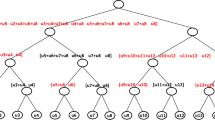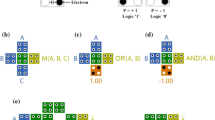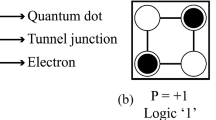Abstract
The improved Direct Digital Synthesizer (DDS) using the Hybrid Wave Pipelining (HWP) technique and COordinate Rotation DIgital Computer (CORDIC) algorithm for Software Defined Radio (SDR) is presented in this paper. In order to achieve high throughput, the hybrid wave pipelining technique is adopted. The HWP can be used to speed up the circuits without insertion of storage elements. The CORDIC algorithm is used for phase-to-amplitude conversion and utilized for dynamic transformation rather than Read Only Memory (ROM) static addressing. The frequency resolution and phase resolution are achieved as 0.023 Hz and 0.088 degree, respectively, at the maximum operating frequency of 199.288 MHz for the proposed DDS architecture. The spectral purity of the proposed design has been improved to 114 dBc with a throughput of 94 %. This paper is focused on the design and implementation of DDS using hybrid wave pipelining with CORDIC approach to target on Xilinx Spartan 3 (XC3S400-5PQ208) Field Programmable Gate Array (FPGA) with a speed grade of −5. The proposed DDS design reduces the gate count from 49.4 % to 18.2 % as compared to the conventional pipelined Read Only Memory Look Up Table (ROMLUT) DDS method. The throughput of the proposed method has been improved from 78 % to 94 % and 55 % of total power reduction as compared with conventional DDS. The performance of the improved DDS architecture is compared with several existing DDS architectures and it is found that the present design is outperforming and can be used for software defined radios.













Similar content being viewed by others
References
R. Andhraka, A survey of CORDIC algorithm for FPGA based computers, in Proc. of the 6th ACM/SIGDA Int. Symposium on Field Programmable Gate Arrays (1998), pp. 191–200
W.P. Burleson, M. Ciesielski, F. Klass, W. Liu, Wave-pipelining: a tutorial and research survey. IEEE Trans. Very Large Scale Integr. (VLSI) Syst. 6(3), 464–474 (1998)
D.D. Caro, A.G.M. Strollo, High performance direct digital frequency synthesizers using piecewise polynomial approximation. IEEE Trans. Circuits Syst. I, Regul. Pap. 52(2), 324–337 (2005)
D.D. Caro, A.G.M. Strollo, High performance direct digital frequency synthesizers in 0.25 µm CMOS using dual-slope approximation. IEEE J. Solid-State Circuits 40(11), 2220–2227 (2005)
L.S.J. Chimakurthy, M. Ghosh, F.F. Dai, R.C. Jaeger, A novel DDS using nonlinear ROM addressing with improved compression ratio and quantization noise. IEEE Trans. Ultrason. Ferroelectr. Freq. Control 53(2), 274–283 (2006)
X. Geng, F.F. Dai, J.D. Irwin, R.C. Jaeger, 24-bit 5.0 GHz direct digital synthesizer RFIC with direct digital modulations in 0.13 µm SiGe BiCMOS technology. IEEE J. Solid-State Circuits 45(5), 944–954 (2010)
X. Geng, F.F. Dai, J.D. Irwin, R.C. Jaeger, An 11-bit 8.6 GHz direct digital synthesizer MMIC with 10-bit segmented sine-weighted DAC. IEEE J. Solid-State Circuits 45(2), 300–313 (2010)
C.T. Gray, W. Liu, R.K. Cavin, Timing constraints for wave-pipelined systems. IEEE Trans. Comput.-Aided Des. Integr. Circuits Syst. 13(8), 987–1004 (1994)
M. Jridi, A. Alfalou, Direct digital frequency synthesizer with CORDIC algorithm and Taylor series approximation for digital receivers. Eur. J. Sci. Res. 30(4), 542–553 (2009)
C.Y. Kang, E.E. Swartzlander, Digit-pipelined direct digital frequency synthesis based on differential CORDIC. IEEE Trans. Circuits Syst. I, Regul. Pap. 53(5), 1035–1044 (2006)
B. Lakshmi, A.S. Dhar, CORDIC architectures: a survey. I. VLSI Des. (2010). doi:10.1155/2010/794891
S.I. Liu, T.B. Yu, H.W. Tsao, Pipeline direct digital frequency synthesizer using decomposition method, in Proc. of the IEEE Circuits Devices Syst (2001), pp. 141–144
A. Madisetti, A.Y. Kwentus, A.N. Willson, A 100-MHz, 16-b, direct digital frequency synthesizer with a 100-dBc spurious-free dynamic range. IEEE J. Solid-State Circuits 34(8), 1034–1043 (1999)
A.L. McEwan, S. Collin, Efficient ROM-less DDFS using non-linear interpolation and non-linear DAC. Analog Integr. Circuits Signal Process. 48, 231–237 (2006)
A.L. McEwan, S. Collins, Analogue interpolation based direct digital frequency synthesis, in Proc. of the IEEE Int. Symposium on Circuits and Syst (2003), pp. 621–624
T. Menakadevi, M. Madheswaran, Implementation of hybrid wave pipelined direct digital synthesizer for software defined radio. J. Eng. Appl. Sci. 6(11), 52–61 (2011)
D.E. Metafas, C.E. Goutis, A DSP processor with a powerful set of elementary arithmetic operations based on CORDIC and CCM algorithms. Microprocess. Microprogram. 30(5), 51–57 (1990)
D.R. Moran, J.G. Menoyo, J.L. Martin, Digital frequency synthesizer based on two coprime moduli DDS. IEEE Trans. Circuits Syst. II, Express Briefs 53(12), 1388–1392 (2006)
H.T. Nicholas, H. Samueli, An analysis of output spectrum of direct digital frequency synthesizer in the presence of phase accumulator truncation, in Proc. of the 41st. IEEE Annual Frequency Control Symposium (1991), pp. 495–502
J. Nyathi, J.G. Delgado-Frias, Hybrid wave-pipelined network router. IEEE Trans. Circuits Syst. I, Fundam. Theory Appl. 49(12), 1764–1772 (2002)
K.K. Parhi, VLSI Signal Processing Systems (Wiley, New York, 1999)
G. Seetharaman, B. Venkataramani, G. Lakshminarayanan, VLSI implementation of hybrid wave-pipelined 2D DWT using lifting scheme. VLSI Des. (2008). doi:10.1155/2008/512746
A.M. Sodagar, G.R. Lahiji, A pipelined ROM-less architecture for sine-output direct digital frequency synthesizers using the second-order parabolic approximation. IEEE Trans. Circuits Syst. II, Express Briefs 48(9), 850–857 (2001)
Y. Song, B. Kim, Quadrature direct digital frequency synthesizer using interpolation based angle rotation. IEEE Trans. Very Large Scale Integr. (VLSI) Syst. 12(7), 701–710 (2004)
G.M. Sreeramareddy, P. Chandrashekarareddy, Design and FPGA implementation of high speed, low power digital up converter for power line communication systems. Eur. J. Sci. Res. 25(2), 234–249 (2009)
A.G.M. Strollo, D.D. Caro, N. Petra, A 630 MHz, 76 mW direct digital frequency synthesizer using enhanced ROM compression technique. IEEE J. Solid-State Circuits 42(2), 350–360 (2007)
Technical tutorial on digital signal synthesis, Analog Devices web (1999). http://www.analog.com/UploadedFiles/Tutorials/450968421DDS_Tutorial_rev12-2-99. Accessed on 12 December 2008
P. Teehan, G.G.F. Lemieux, M.R. Greenstreet, Towards reliable 5 Gbps Wave-pipelined and 3 Gbps surfing interconnect in 65 nm FPGAs, in Proc. of the Int. Symposium on FPGA (2009), pp. 43–52
J. Tierney, C.M. Radre, B. Gold, A digital frequency synthesizer. IEEE Trans. Audio Electroacoust. 19(1), 48–57 (1971)
D. Timmermann, H. Hahn, B.J. Hosticka Schmidt, A programmable CORDIC chip for digital signal processing applications. IEEE J. Solid-State Circuits 26(9), 1317–1321 (1991)
S.E. Turner, D.E. Kotecki, Direct digital synthesizer with ROM-less architecture at 13-GHz clock frequency in InP DHBT technology. IEEE Microw. Wirel. Compon. Lett. 16(5), 296–298 (2006)
S.E. Turner, D.E. Kotecki, ROM-based direct digital synthesizer architecture at 24-GHz clock frequency in InP DHBT technology. IEEE Microw. Wirel. Compon. Lett. 18(8), 566–568 (2008)
J. Vankka, Direct Digital Synthesizers: Theory, Design and Applications (Kluwer Academic, London, 2001)
J.E. Volder, The CORDIC trigonometric computing technique. IEEE Trans. Comput. 8(3), 330–334 (1959)
J.E. Volder, The birth of CORDIC. J. VLSI Signal Process. 25(2), 101–105 (2000)
W. Wang, Z. Yifang, Y. Yang, Efficient wireless digital up converters design using system generator, in Proc. of the Int. Conference on Signal Process (2006), pp. 443–446
XILINX IP logic core DDS complier v4.0. Xilin web. http://www.xilinx.com/support/documentation/ip_documentation/dds_ds558.pdf (2009). Accessed on 16 March 2010
Author information
Authors and Affiliations
Corresponding author
Rights and permissions
About this article
Cite this article
Madheswaran, M., Menakadevi, T. An Improved Direct Digital Synthesizer Using Hybrid Wave Pipelining and CORDIC algorithm for Software Defined Radio. Circuits Syst Signal Process 32, 1219–1238 (2013). https://doi.org/10.1007/s00034-012-9495-x
Received:
Revised:
Published:
Issue Date:
DOI: https://doi.org/10.1007/s00034-012-9495-x




